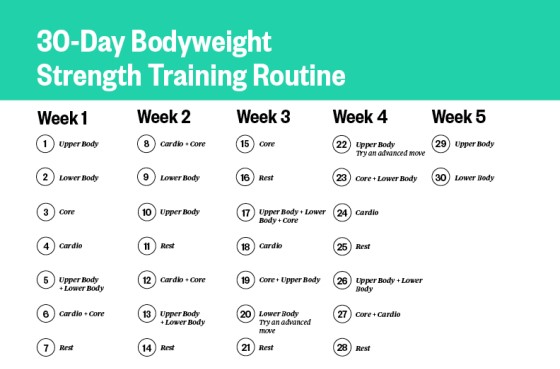"Full-Body Workout Routines for All Fitness Levels"
So,here is a brief guideMaximize Your Gains:
Full-Body Workout Routines for All Fitness Levels is a comprehensive guide that provides full-body workout routines suitable for individuals of various fitness levels, including beginner, intermediate and advanced exercisers. This guide aims to offer effective and challenging workouts that can be tailored to each individual's fitness abilities. Here is a detailed description of the full body workout routine:
Introduction:
Full-body workouts are a great way to get maximum benefits and ensure balanced fitness for your entire body. Rather than focusing only on specific muscle groups, these workouts target multiple areas in a single session, making them efficient and effective. Here's why adding a full-body workout to your routine can be a game-changer:
- Wide Muscles Engagement: Full-body workouts engage different muscle groups at once, thereby promoting overall muscle development and strength. You'll sculpt and shape your arms, legs, core and more in one comprehensive session.
- Time-efficient: With our busy lives, full body workouts provide a time-efficient solution. Because they target multiple areas, you can get a complete workout in less time than if you split your routine over several days.
- Increased Calorie Burn: Because of their high intensity and multi-muscle involvement, full-body workouts are excellent for burning calories and supporting weight management goals.
- Enhanced cardiovascular fitness: Many full-body exercises incorporate cardio elements, such as jumping jacks or burpees, which improve cardiovascular fitness and endurance.
- Balanced Strength: By working the entire body, a full body workout prevents muscle imbalances, reduces the risk of injuries and promotes overall physical stability.
- Adaptability for all fitness level: What sets them apart is their inclusiveness of full body workouts. Whether you are a beginner, intermediate, or advanced fitness enthusiast, these routines can be tailored to your specific needs and abilities.
- Variable Intensity: Full-body workouts allow you to adjust the intensity based on your fitness level. Whether you're using bodyweight exercises or adding resistance with dumbbells or resistance bands, you have the flexibility to challenge yourself appropriately.
- Holistic Health: When you take care of your entire body through full body workouts, you are promoting overall health. Improved strength, stamina and flexibility contribute to a complete fitness routine that supports your overall well-being.
No matter where you are on your fitness journey, this guide has got you covered. Whether you're a beginner looking to build a foundation, an intermediate looking to progress, or an advanced enthusiast pushing their limits, the exercises and tips included here ensure that everyone can participate and thrive.
---Excited:
Begin each workout routine with a dynamic warm-up to prepare the body for exercise.
Incorporate dynamic stretches and movements to increase blood flow and flexibility.
Workout routine for beginners:-
- Provided full-body workout routines for beginners, with an emphasis on simple and safe exercises. Incorporate exercises that use body weight or light resistance, focusing on mastering proper form.
 |
| Image Credit: Google |
- Provided modifications and options to accommodate the fitness level of beginners.
Presents more challenging full-body workout routines for intermediate level individuals:-
- A mix of body weight and weighted exercises to further increase strength and endurance.
 |
| Image Credit: Google |
Workout routine for advanced exercisers:-
- Provided an intense and advanced full-body workout routine for experienced fitness enthusiasts. Incorporate complex movements, plyometrics and high resistance to challenge the muscles.
 |
| Image Credit: Google |
Core Strengthening:
core exercises suitable for all fitness levels.
Include exercises that target the abdominals, obliques and lower back.
Offer a variety of core exercises to cater to different fitness levels.
Cool Down and Stretching:
End each workout routine with a cool-down segment to promote recovery and flexibility.
Lead readers through a series of steady stretches targeting major muscle groups.
Tips to progress:
Progressing from one fitness level to the next is an exciting and rewarding journey that allows you to continually challenge yourself and reach new heights in your fitness goals. Here's some friendly guidance on how to do it:
Master the Basics: Start by mastering the basic exercises and techniques at your current fitness level. Focus on maintaining proper form and developing a strong mind-muscle connection.
Gradually increase the intensity: As you become more proficient in your workouts, gradually increase the intensity of your workouts. This can be done by adding more repetitions, sets, or shortening rest periods between exercises. Small increments over time will lead to significant improvements.
Add resistance: To challenge your muscles and keep progressing, incorporate resistance training. Whether it's using dumbbells, resistance bands, or kettlebells, resistance exercises build strength and promote muscle growth.
Explore Advanced Variations: Once you feel confident in your abilities, explore advanced variations of the exercise. For example, progress from regular squats to weighted squats or from standard push-ups to elevated push-ups. These variations keep your workout fresh and add to the challenge.
Set new goals: Set new fitness goals regularly to work towards. Whether it's completing a certain number of push-ups, achieving a specific time for a run, or lifting a heavy weight, having a goal gives you a clear direction and motivation to push yourself.
Listen to your body: Pay attention to your body's signals and respond accordingly. If you feel tired or experience discomfort, take a step back and allow yourself proper rest and recuperation. Making progress safely means finding the right balance between pushing yourself and listening to your body's needs.
Incorporate scheduling: Consider incorporating scheduling into your workout routine. This involves organizing your training into phases, alternating between high- and low-intensity periods, to prevent plateaus and optimize results.
Celebrate Milestones: Celebrate your achievements and the milestones you hit along the way. Acknowledging your progress builds confidence and encourages you to keep striving for even greater achievements.
Safety and Precautions:
Safety is paramount when doing full-body workouts. To ensure a safe and injury-free experience, here are some friendly tips to keep in mind:
Warm-up: Always start with a dynamic warm-up to increase blood flow, warm up your muscles, and prepare your body for exercise. Light movements such as arm bends, leg raises and bodyweight squats can help prevent strains and injuries.
Proper Form: Maintain proper form during each exercise. Incorrect technique can lead to injury, so pay attention to your body alignment, posture and momentum. If you're unsure about a particular exercise, seek guidance from a fitness professional.
Gradual Progression: As you increase the intensity or resistance, do so gradually. Avoid sudden jumps in weight or intensity to prevent overexertion and strain. Steady progress allows your body to adapt and reduce your risk of injury.
conclusion:
- Replay the versatility of full-body workouts for all fitness levels and their ability to maximize benefits.
- It Encourage readers to choose a workout routine that suits their fitness level and fitness goals.

